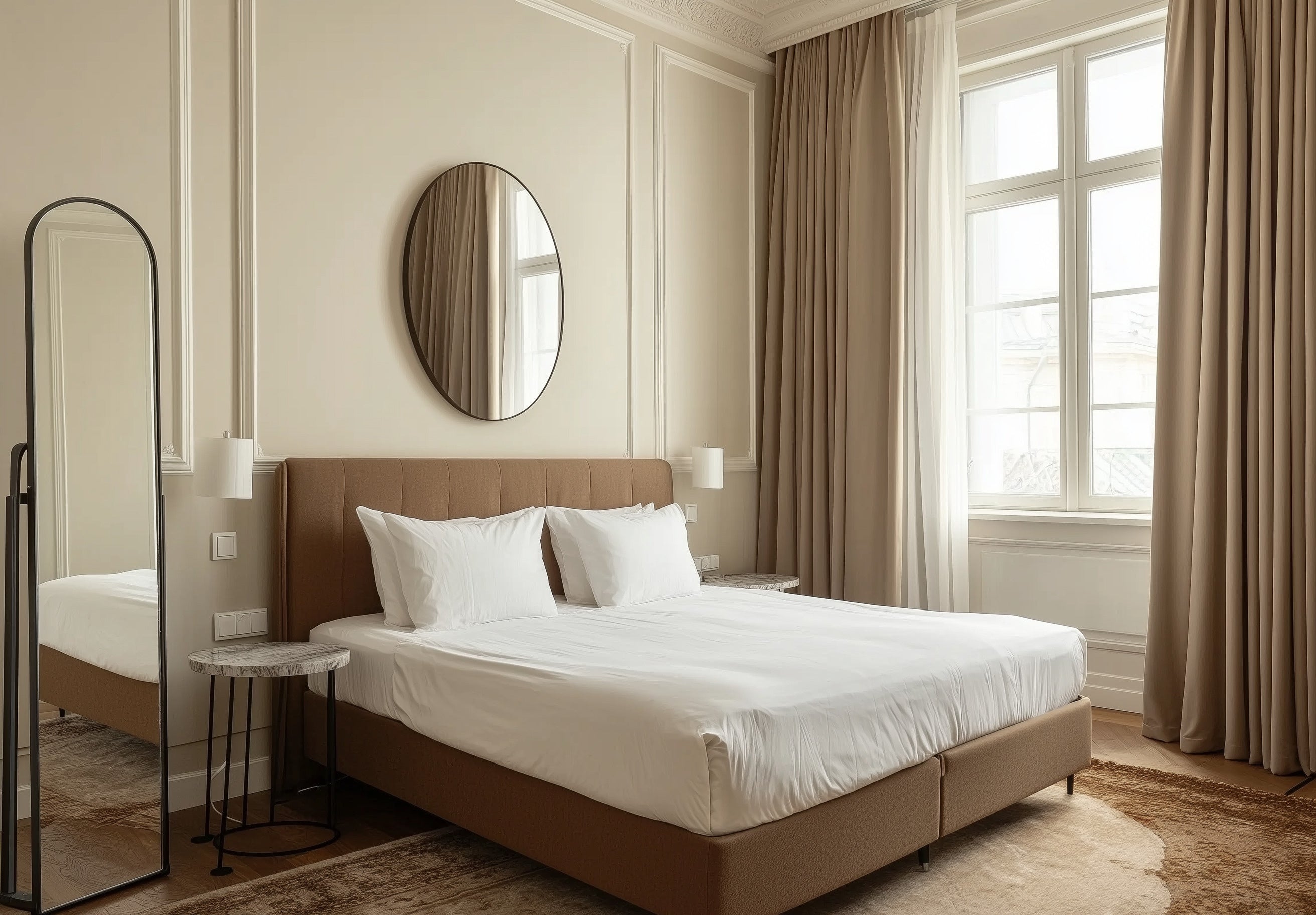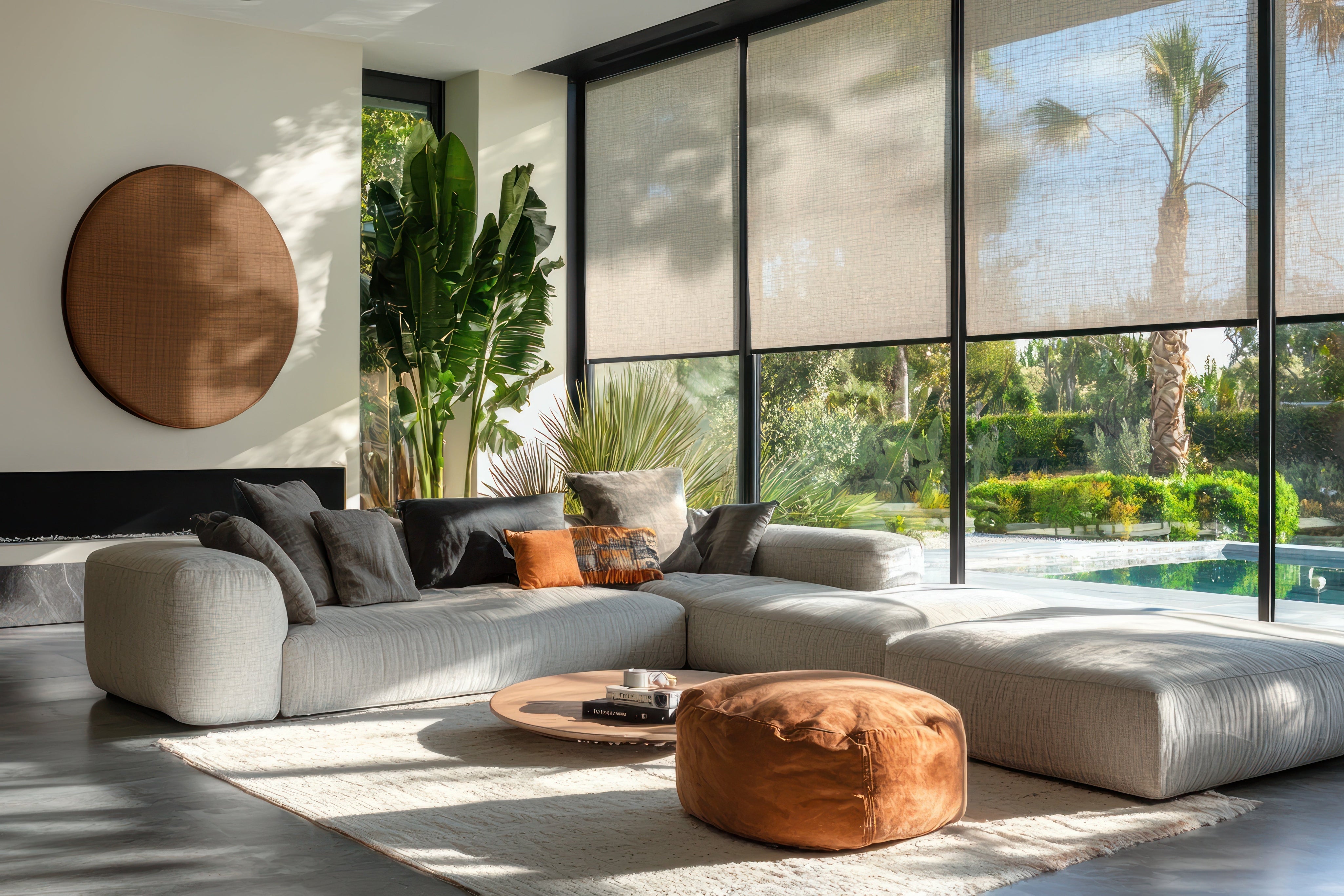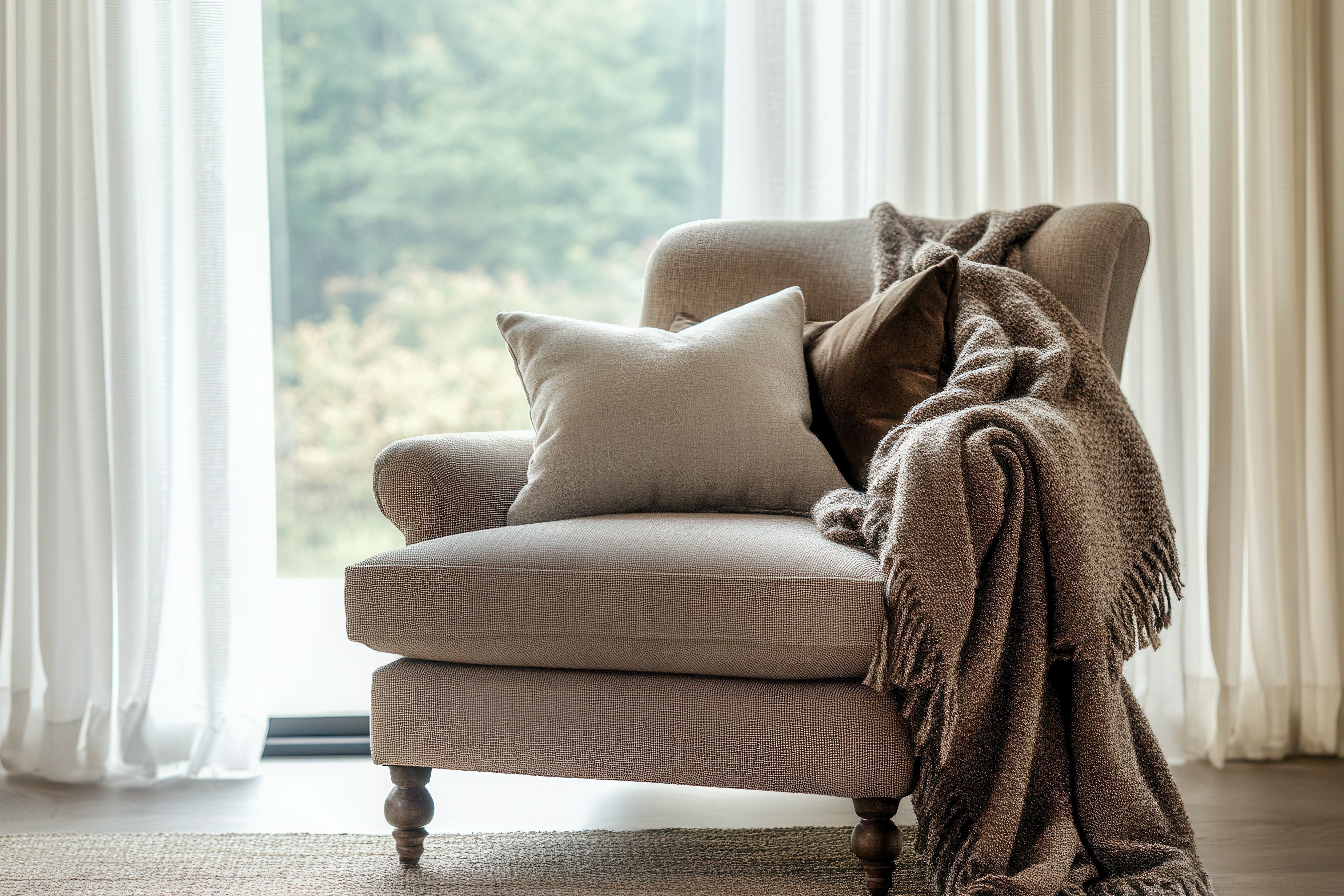Living in a small space doesn’t mean you have to compromise on style or comfort, especially when it comes to choosing the right curtains for small rooms. With the right design strategies, even the tiniest room can feel open, airy, and inviting. One of the most underrated tools in home décor? Curtains. When chosen and positioned wisely, curtains can dramatically transform a small room, making it appear larger and brighter.
In this post, we’ll walk you through the best tips and tricks on how to use curtains in small spaces to enhance light, add height, and maximize visual space.
Introduction to Small Room Design
When it comes to designing small rooms, every detail matters. One of the most crucial elements in creating a sense of spaciousness is the use of curtains. Curtains can help maximize natural light, create a sense of openness, and even make a room feel larger. For instance, sheer curtains are an excellent choice for small rooms as they allow more natural light to filter through, making the space feel brighter and more airy. By understanding the role of curtains in small room design, you can create a more expansive and spacious living area. Here are some tips to help you choose the right curtains for your space:
-
Opt for Sheer Curtains: These allow more natural light to enter, enhancing the room’s brightness.
-
Choose Light Fabrics: Light fabrics like linen or voile can create an airy feel.
-
Stick to Neutral Tones: Neutral tones reflect light better, making the room feel more open.
By following these tips, you can transform your small room into a more inviting and spacious environment.
Why Curtains Matter in Small Rooms
Curtains aren’t just functional—they’re a key part of your room’s design. In compact areas, every element you add or remove affects the room’s perception. Poor curtain choices can make a space feel closed in and cluttered, while the right ones can bring in more light, add vertical space, and create a cohesive aesthetic. The right curtain choices can significantly influence the perceived size of a room, making it feel more spacious and open.
Let’s explore how to use curtains to your advantage in small rooms.
1. Choose Light, Airy Fabrics
Best curtain fabrics for small rooms:
-
Sheer cotton
-
Linen
-
Voile
-
Lightweight polyester blends
When choosing curtains for small rooms, it's essential to opt for light and breathable fabrics that allow natural light to pass through. Heavy drapes or thick materials can feel overwhelming in a small space. Sheer curtains diffuse sunlight beautifully, creating a soft glow that can make your space feel both brighter and more expansive.
Bonus Tip: Layer sheer curtains with lightweight blackout liners for nighttime privacy without sacrificing daytime light.
2. Go for Light and Neutral Colors
Colors play a powerful role in how we perceive space. Light-colored curtains help reflect natural light, which can visually open up the room. In rooms with limited space, light-colored curtains can help reflect natural light and create a more open feel.
Best curtain colors to make a room look bigger:
-
White
-
Cream
-
Soft gray
-
Beige
-
Pastel shades
Matching your curtain color closely to the wall color can eliminate harsh visual breaks, resulting in a more seamless, open look.
3. Hang Curtains High and Wide
One of the most effective design tricks is to mount your curtain rod higher and wider than your window frame.
-
Hang curtains 4–6 inches above the window, or even right below the ceiling to give the illusion of height.
-
Extend the rod 3–6 inches beyond the window frame on each side to expose more of the glass when open.
Consider fixing rods from one side of the wall to the other to create a spacious and breezy atmosphere.
This strategy draws the eye upward and outward, making the ceilings seem taller and the windows larger.
4. Use Floor-Length Curtains
Even in small spaces, floor-length curtains are a must. Short or mid-length curtains can visually break up the wall, making the room feel shorter and more cramped. While floor-length curtains are recommended, avoid using heavier curtains as they can make the room feel more cramped.
Choose curtains that:
-
Just kiss the floor for a tailored look
-
Or slightly puddle for a touch of elegance
Avoid curtains that stop at the windowsill—they can disrupt the flow and reduce the sense of height.
5. Avoid Busy Patterns
In small spaces, bold prints can overwhelm and shrink the visual space. Stick to simple, subtle designs. While patterned curtains can add visual interest, it's better to opt for solid colors or subtle patterns to avoid overwhelming the space.
Great choices for small rooms:
-
Solid colors
-
Vertical stripes
-
Tone-on-tone textures
-
Small-scale prints
Avoid:
-
Large florals
-
Loud geometric patterns
-
Dark, heavy motifs
If you want pattern, opt for vertical lines to draw the eye upward and elongate the space.
6. Pair Curtains with Mirrors and Reflective Accents
Amplify your efforts by pairing your curtain setup with mirrors and reflective accessories. For example, placing a mirror across from a window helps bounce natural light deeper into the room, increasing brightness and depth.
In addition to enhancing brightness, sheer curtains can also provide light control, allowing you to manage natural light effectively.
Reflective curtain rods, light metallic finishes, and glossy flooring or furniture can further brighten the space.
7. Choose Minimal, Streamlined Hardware
Bulky or overly decorative curtain rods can crowd a small room. Instead, choose slim, minimal hardware in finishes that blend with your décor—like matte black, brushed nickel, or even painted white.
In rooms with limited wall space, slim and unobtrusive hardware can help maintain a clean and uncluttered look.
Clean lines help maintain an uncluttered, open aesthetic.
8. Curtain Alternatives for Extra-Tight Spaces
If your room is especially tight or your windows are in unusual spots, consider alternatives:
-
Ceiling-mounted curtain tracks to save wall space
-
Roman shades or roller blinds paired with sheers
-
Room divider curtains in studio apartments or lofts
While neutral shades are commonly recommended, they are not the only option; lighter or pastel versions of existing colors can also create a sense of spaciousness.
These options allow for flexibility without compromising light or style.
9. Match Curtains to Your Room’s Style
Ensure your curtains match the overall aesthetic of your room. Curtains do not need to be the same color in every room; matching them to the specific decor can enhance the perception of space and light. Cohesiveness helps reduce visual noise in small areas.
Examples:
-
Modern/Minimalist: Crisp white sheer panels with streamlined rods
-
Boho: Earth-toned linens and natural wood rods
-
Scandinavian: Soft grays or pastels with minimal hardware
-
Coastal: Light blue or ivory curtains with nautical tiebacks
10. Multi-Function Curtains
In small homes, every item should serve more than one purpose—and curtains can too.
Use curtains to:
-
Separate spaces in open-plan rooms
-
Hide storage shelves or clutter
-
Add ambiance with fairy lights behind sheer panels
A creative curtain setup can solve both functional and aesthetic problems in tight quarters.
Maximizing Window Exposure
Maximizing window exposure is essential in small rooms, as it allows more natural light to enter the space. One effective way to achieve this is by installing curtain rods that are wider than the window frame. This technique creates an illusion of wider windows and allows more light to flood the room. Additionally, using light fabrics and neutral tones can help reflect natural light and create a sense of brightness. By maximizing window exposure, you can make a small room feel more spacious and airy.
It’s also important to consider the type of curtain rod and curtain header you use, as they can impact the overall look and feel of the room. For example, a ceiling-high curtain rod can draw the eye upward, creating a sense of height and making the room feel more expansive. Here are some tips to help you maximize window exposure:
-
Install Wider Curtain Rods: Extend the rods beyond the window frame to let in more light.
-
Use Light Fabrics: Light fabrics reflect natural light, enhancing the room’s brightness.
-
Opt for Neutral Tones: Neutral tones can make the room feel more open and airy.
By following these tips, you can create a brighter and more spacious room.
Mounting Techniques
Mounting techniques play a crucial role in creating a sense of spaciousness in small rooms. By mounting curtains high, you can draw the eye upward and create a sense of height. This can be achieved by placing the curtain rod close to the ceiling or using a ceiling-mounted curtain track. Additionally, using tie-backs or holdbacks can help maintain an open and cohesive look, while also allowing you to control the amount of light that enters the room.
It’s also important to consider the type of curtain hardware you use, as it can impact the overall look and feel of the room. For example, using slim and unobtrusive curtain rods or tracks can create a sleek and minimalist look, while also saving wall space. Here are some tips for effective mounting techniques:
-
Mount Curtains High: Place the curtain rod close to the ceiling to create a sense of height.
-
Use Tie-Backs: Tie-backs can help maintain an open look and control light.
-
Choose Slim Hardware: Slim and unobtrusive rods save wall space and create a sleek look.
By implementing these mounting techniques, you can enhance the sense of height and spaciousness in your small room.
Final Thoughts
Curtains are more than just window dressings—they’re a powerful tool for transforming your space. With the right fabric, length, and placement, they can dramatically enhance the sense of light, airiness, and height in any small room.
Properly chosen curtains can enhance the overall perception of space in the whole room, making it feel more cohesive and spacious.
Ready to Transform Your Small Space?
At C&M Textiles, we specialize in custom curtains designed to maximize light and elevate your space—no matter how small. Get a Free Quote Today or visit your nearest C&M Textiles showroom to explore our wide range of high-quality fabrics, colors, and textures.




